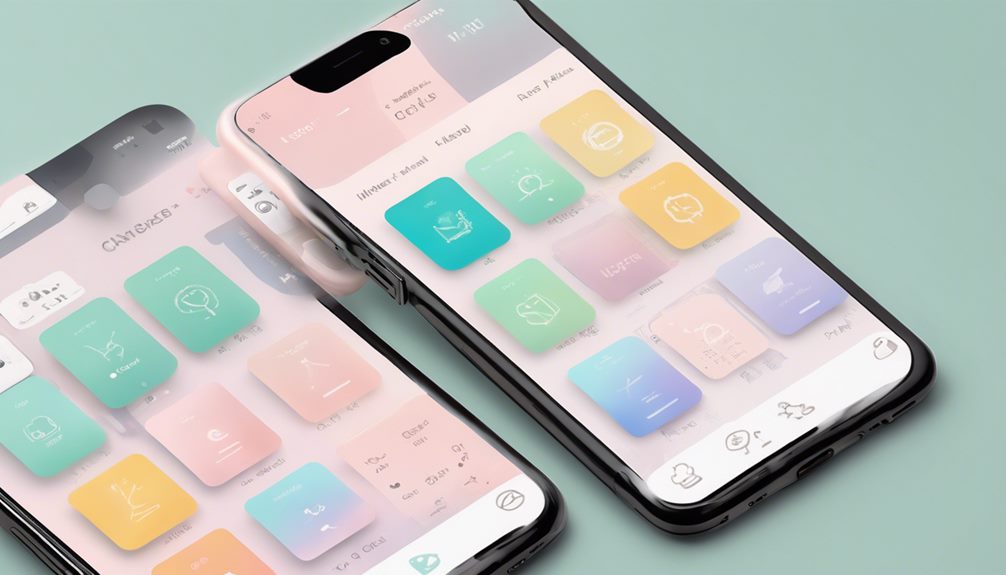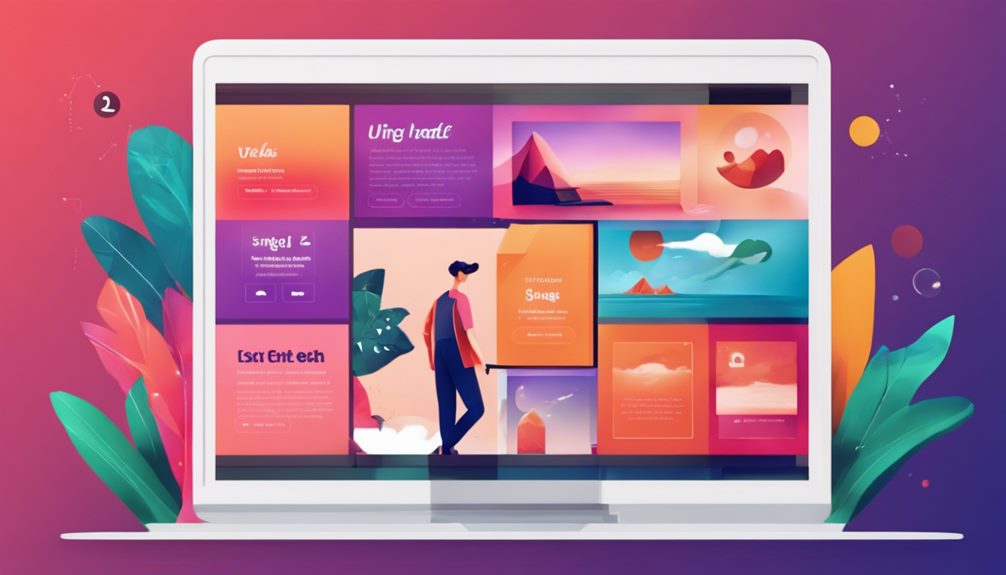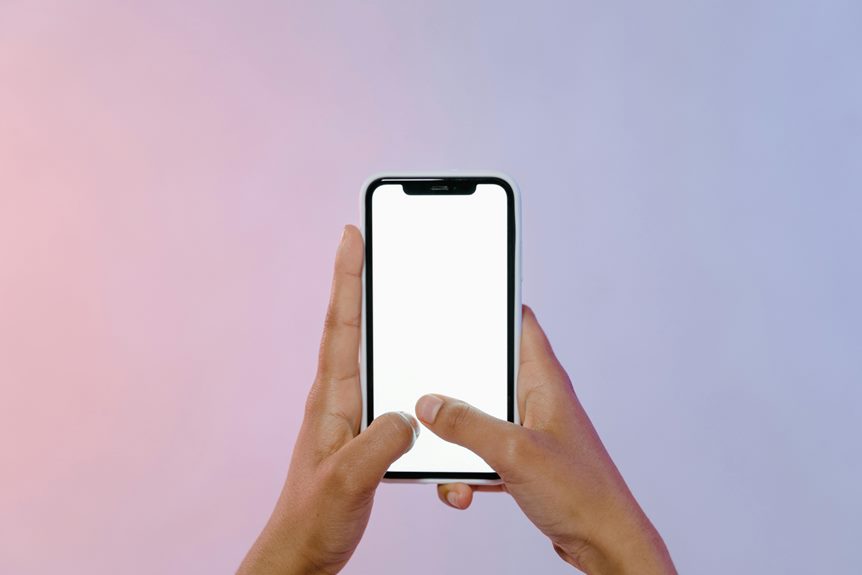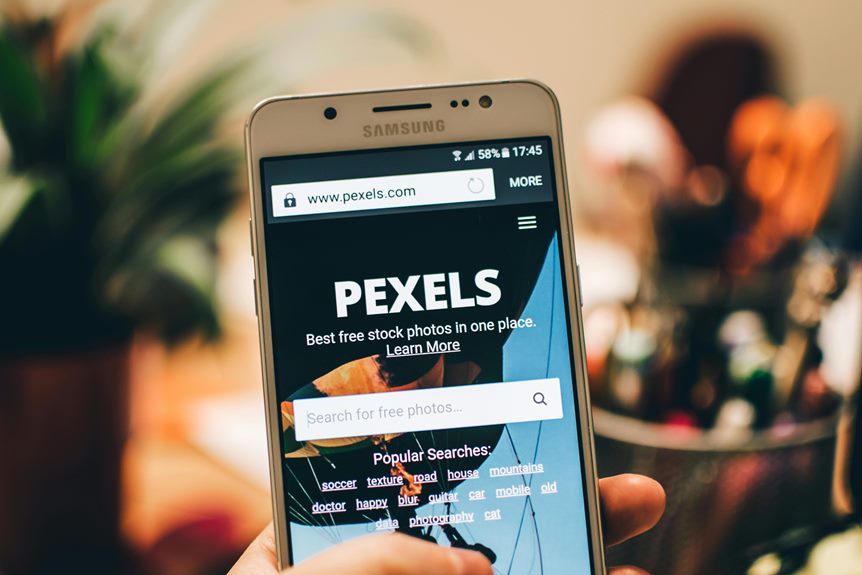Navigating the world of mobile-friendly web design is like steering a ship through a sea of digital devices. You must prioritize mobile responsiveness, ensuring your site gracefully adapts to screens of all sizes. But that's just the tip of the iceberg. How do you balance speed with aesthetics, and functionality with simplicity? With a few strategic adjustments, you can transform user experiences across the board. From optimizing loading speeds to designing for touchscreens, there are crucial steps you shouldn't overlook. Curious about the best practices for scalability and readability? Let's explore how you can elevate your web design game.
Prioritize Mobile Responsiveness
Ensuring your website is mobile-responsive isn't just a best practice—it's a necessity. As more users access the web through their smartphones, your site needs to adapt seamlessly to different screen sizes. Start by choosing a responsive design framework or theme that automatically adjusts layouts. This ensures your website looks professional and functions smoothly on any device, providing an intuitive user experience.
When designing, focus on simplicity and clarity. Use a mobile-first approach by prioritizing essential content and features. Avoid clutter; keep navigation straightforward with easy-to-tap buttons and links. Make sure text is legible without zooming, and images scale appropriately to maintain visual appeal.
Test your website on various devices and screen sizes. This helps identify any layout issues that could disrupt user experience. Remember, a mobile-responsive site isn't just about fitting everything onto a smaller screen—it's about enhancing user engagement by delivering content in a user-friendly manner.
Incorporate touch-friendly elements that make interactions effortless. Think about your audience's journey and streamline it by removing unnecessary steps. By prioritizing mobile responsiveness, you'll create a site that's not only accessible but delightful to use on any device.
Optimize Loading Speed
One of the most crucial aspects of mobile-friendly web design is optimizing loading speed. When users visit your site, they expect it to load quickly and efficiently. Slow loading times can frustrate users, leading them to abandon your site before even experiencing your content.
To enhance speed, start by compressing your images. Large, high-resolution images might look great, but they can significantly slow down your site. Use tools to compress images without losing quality.
Minimize HTTP requests by reducing the number of elements on your page. Each element—like images, scripts, and CSS—requires a request, so fewer elements mean faster loading.
Leverage browser caching to store certain elements locally on users' devices, so they don't have to reload everything on each visit.
Consider using a content delivery network (CDN) to distribute your site's content across a network of servers worldwide. This ensures users connect to a server nearest to them, speeding up load times.
Simplify Navigation

Navigating a website should feel intuitive and straightforward, especially on mobile devices. When users land on your site, they shouldn't struggle to find what they're looking for. Keep your navigation menu simple and decluttered. Use clear, concise labels for each section, and limit the number of menu items to avoid overwhelming your audience. Less is more when it comes to mobile navigation.
Consider using a hamburger menu to save screen space, but ensure it's recognizable and easy to access. Prioritize the most important pages and group similar content to make the user's journey logical and seamless. A well-structured navigation helps users find information quickly, encouraging them to explore further.
Here's a quick guide to consider:
| Element | What to Do | Why It Matters |
|---|---|---|
| Menu Items | Limit to 5-7 | Avoids overwhelming users |
| Labels | Use clear, concise language | Enhances user understanding |
| Navigation Style | Consistent across pages | Provides a unified experience |
| Grouping | Similar items together | Simplifies user decisions |
| Accessibility | Ensure easy access | Inclusive for all users |
Design for Touchscreens
Once your navigation is streamlined, it's important to focus on creating a seamless experience for touchscreens.
Start by considering the size of touch targets. Buttons, links, and interactive elements should be large enough to tap easily without zooming in. Aim for at least 44×44 pixels, which is generally a comfortable size for most thumbs. This ensures users can navigate your site effortlessly, enhancing their overall experience.
Next, prioritize spacing. Adequate space between touch targets prevents accidental taps and frustration. You want users to feel in control, guiding them smoothly through your content. Use generous padding and margins to create a clean, uncluttered interface that invites interaction.
Another key aspect is the gesture-friendly design. Incorporate swiping, pinching, and other intuitive gestures that users expect in a touchscreen environment. This not only improves usability but also adds a modern aesthetic to your site.
Use Scalable Images

To ensure your website looks crisp and professional on any device, focus on using scalable images. Scalable images adapt smoothly to different screen sizes, maintaining clarity and quality without slowing down your site. By integrating these images, you enhance user experience, making your website visually appealing and efficient.
When implementing scalable images, consider the following:
- Use SVG Files: Scalable Vector Graphics (SVG) are perfect for logos and icons because they maintain quality at any size without increasing file size.
- Responsive Image Techniques: Utilize the 'srcset' attribute in HTML to serve different image sizes based on the user's device, ensuring optimal loading times.
- Image Compression Tools: Platforms like TinyPNG or ImageOptim reduce file size without sacrificing quality, speeding up your page load time.
- Lazy Loading: Implement lazy loading to ensure images load only when they're visible on the screen, enhancing performance.
These strategies allow your website to be visually captivating while remaining responsive. Users will appreciate the seamless experience, as images load quickly and look stunning, regardless of their device.
Implement Mobile-Friendly Typography
After ensuring your images are perfectly scalable, it's time to focus on typography that suits mobile screens. Start by choosing a font that's clean and easy to read. Sans-serif fonts often work best because they maintain clarity even at smaller sizes. Remember, space is limited on mobile devices, so make every letter count.
Adjust your font size for readability. Aim for a minimum size of 16 pixels to ensure users don't need to zoom in. Line height is equally important; a range of 1.2 to 1.5 times the font size offers a comfortable reading experience. This spacing prevents text from feeling cramped and makes scrolling feel natural.
Don't forget about contrast. High contrast between text and background enhances readability, especially in various lighting conditions. Test your text in both light and dark modes if your site supports them.
Consider your audience's interaction with the text. Larger touch targets are crucial; ensure links are easy to tap, and text isn't too close together.
Prioritize responsiveness by testing your typography on multiple devices. By implementing these practices, you'll create a seamless, enjoyable reading experience that keeps users engaged.
Conclusion
Think of your mobile-friendly web design as a well-tended garden. Each tip is a seed planted carefully: responsiveness nurtures growth, speed is the sun that accelerates it, and simple navigation is the gentle breeze guiding users through. Touchscreen design waters the experience, ensuring vibrant interaction, while scalable images and typography are the rich soil, anchoring beauty and readability. With these elements harmonized, your users will find an intuitive path, blooming with engagement and satisfaction.


